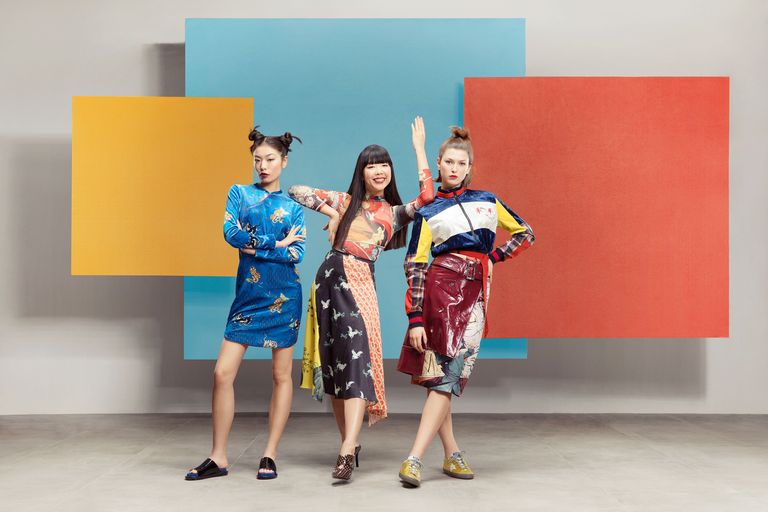We have seen unthinkable trends overcome the barriers of the Coronavirus as designers think outside the box to become more conscious and sustainable.

The Chinese fashion industry was majorly affected with the disastrous effects of the Coronavirus as both external and internal markets felt the consequences. As one of the largest producers of textiles, many countries were dependent on the country to provide the materials needed to create their work.This disruption in manufacturing was not the only source of hardship as many faced artistic struggles to express themselves in a never-ending period of self-isolation. This was true even for the designers of the home country and while many struggled, we have seen the introduction of unexpected fashion trends, thriving only with the Coronavirus.
Masks have always been a thing in Asia, where harsh weather and fine dust calls for the need of extra protection. It eventually adapted to being a fashion trend, where people can be seen on the streets with a mask just because they can. With the pandemic, we have seen an influx of use in masks and Chinese fashion designers have responded by designing fashionable, bacteria-resistant clothing.
Zhou Li, director of design at Shandong Sunbird Garment, has created reusable, silk masks equipped with N95 filters. By using colourful Chinese silk decorated with cultural motifs of orchids, Camelia and good luck symbols, she was able to combine functionality with fashion.
Similarly, Kathrin Von Rechenberg, inspired by the mark shortage, created reusable tea silk masks. They leave less of an environmental impact as they can be washed up to 200 times, hence a more sustainable option to the surgical mask. It is naturally dyed with yams native to Guangdong, with 4 colours and textures available. It is a “laborious” task as it requires the careful precision of ironing, cut, stitched and sanitised.

Liu Wei, chief design director of Kefang Professional Wear Research Institute, designed a line of breathable and germ-resistant windbreakers. She was inspired to make these garments as she saw the lack of resources given to civilians at the beginning of the pandemic, forcing them to use makeshift items. Disappointed to see that medical personnel were wearing thin, non-breathable clothing that held little protection from the virus, she made this line to be sent to Wuhan medical teams.

By combining fashion and protection, Liu Wei was able to create red, white and blue windbreakers that also covers the head. It also has adjustable straps to ensure that the head is tightly protected and in addition to wearing a mask and goggles, no bare skin should be exposed. Not only does it provide protection from germs, it is made from breathable, anti-static, dust-resistant, waterproof material that upholds the requirements of emergency personnel. Hence, this multi-talented garment is perfect for front line workers. Her other target markets include workers who are exposed to lots of people such as transport officers as well as public commuters.
We can see that the pandemic has called for socially conscious trends as there was even a revival of JBNY’s old stock where customers scrambled to buy a padded jacket that only had holes for the eyes.
Clothing and masks are not the only thing that has changed in China where we have seen a boom in digitalisation of the retail industry. To make up for the lack of physicality in shopping, we have seen new channels of marketing such as live streaming and community marketing. With the outstanding capabilities of current technologies such as smart equipment and VR, the forced digitalisation of the fashion industry may just become the norm not only for China but the rest of the world. This is not simply limited to the e-commerce side of things but could potentially extend to every facet of the industry from design to product manufacturing.
The Coronavirus pandemic has shifted consumerist behaviour in China as both the people and companies have shifted to adapt to the effects of the pandemic.
Subscribe to FIB’s Weekly Alchemy Report for your weekly dose of music, fashion and pop culture news!







